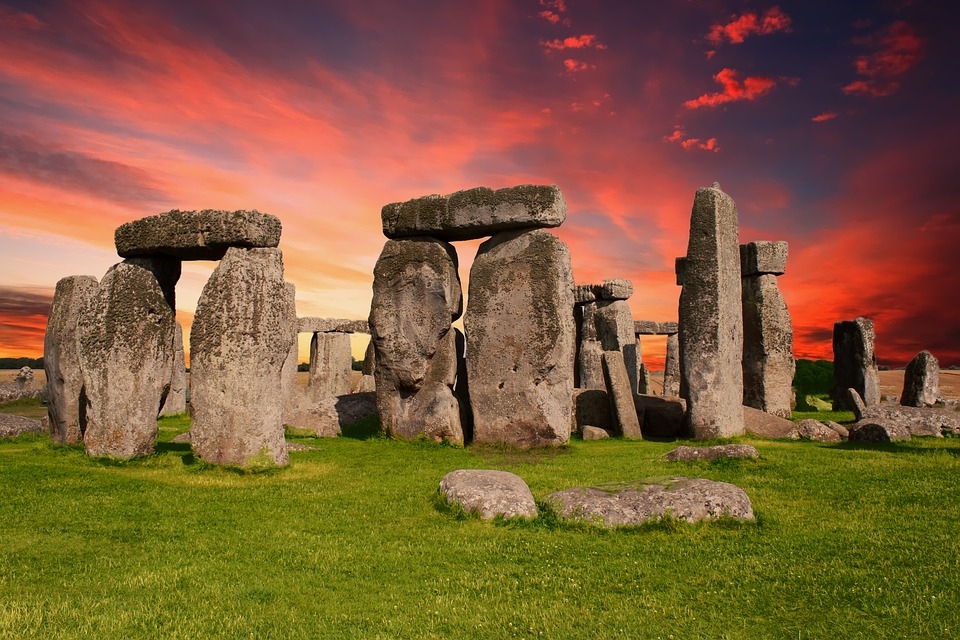Stonehenge is among the most popular and historic monuments in the world today. Recently, archaeologists made yet another discovery close to the historic site, as they found another monument.
Express reports a team of researchers from the University of St. Andrews, the University of Birmingham, University of Warwick, University of Glasgow, and the University of Wales Trinity Saint David found an ancient ring made up of shafts measuring over 10 meters in diameter with a depth of five meters. These shafts surround the ancient settlement of Durrington Walls, which is found three kilometers away from Stonehenge. Analysis of the shafts reveals that the monuments are Neolithic and date all the way back over 4,500 years ago.
Experts believe that these shafts served as a border to a sacred area that is connected to Stonehenge. According to Dr. Richard Bates of St. Andrews School of Earth and Environmental Sciences, “Remote sensing and careful sampling is giving us an insight to the past that shows an even more complex society than we could ever imagine. Clearly sophisticated practices demonstrate that the people were so in tune with natural events to an extent that we can barely conceive in the modern world.”
This discovery helped archaeologists document the landscape of Stonehenge in greater detail, as this provided more information on how people who exited in Neolithic times lived and what they believed in. This find follows the recent Summer Solstice online event as the in-person gathering was canceled because of the coronavirus.
Previously, more discoveries were made on the historic site. In the program “The Secret Skeletons Beneath Stonehenge” in the Discovery Channel in 2018, osteoarchaeologist Jackie McKinley theorized that there was another purpose for people at the time to come to Stonehenge thousands of years ago. Most experts have long believed that Stonehenge was used as a burial site for the dead but according to Dr. McKinley, based on the bones found underneath the monument, people at the time also settled there and worked there.
Dr. McKinley made a surprising find in the form of gold ornaments found inside the mouth of a skeleton of an adult male underneath Stonehenge. This suggested that they were in the early stages of metalworking, and the person who had these ornaments was a metalworker who went to Stonehenge to sell their works.



 Why is the universe ripping itself apart? A new study of exploding stars shows dark energy may be more complicated than we thought
Why is the universe ripping itself apart? A new study of exploding stars shows dark energy may be more complicated than we thought  Why some people don't trust science – and how to change their minds
Why some people don't trust science – and how to change their minds  Spacesuits need a major upgrade for the next phase of exploration
Spacesuits need a major upgrade for the next phase of exploration  The brightest object in the universe is a black hole that eats a star a day
The brightest object in the universe is a black hole that eats a star a day  Larger and more frequent solar storms will make for potential disruptions and spectacular auroras on Earth
Larger and more frequent solar storms will make for potential disruptions and spectacular auroras on Earth  Archeoastronomy uses the rare times and places of previous total solar eclipses to help us measure history
Archeoastronomy uses the rare times and places of previous total solar eclipses to help us measure history  Tatahouine: 'Star Wars meteorite' sheds light on the early Solar System
Tatahouine: 'Star Wars meteorite' sheds light on the early Solar System  The mystery of consciousness shows there may be a limit to what science alone can achieve
The mystery of consciousness shows there may be a limit to what science alone can achieve  The brain is the most complicated object in the universe. This is the story of scientists’ quest to decode it – and read people’s minds
The brain is the most complicated object in the universe. This is the story of scientists’ quest to decode it – and read people’s minds  If life exists on Jupiter’s moon Europa, scientists might soon be able to detect it
If life exists on Jupiter’s moon Europa, scientists might soon be able to detect it  How do airplanes fly? An aerospace engineer explains the physics of flight
How do airplanes fly? An aerospace engineer explains the physics of flight  Dark energy is one of the biggest puzzles in science and we're now a step closer to understanding it
Dark energy is one of the biggest puzzles in science and we're now a step closer to understanding it  The rising flood of space junk is a risk to us on Earth – and governments are on the hook
The rising flood of space junk is a risk to us on Earth – and governments are on the hook  Could a telescope ever see the beginning of time? An astronomer explains
Could a telescope ever see the beginning of time? An astronomer explains 






























